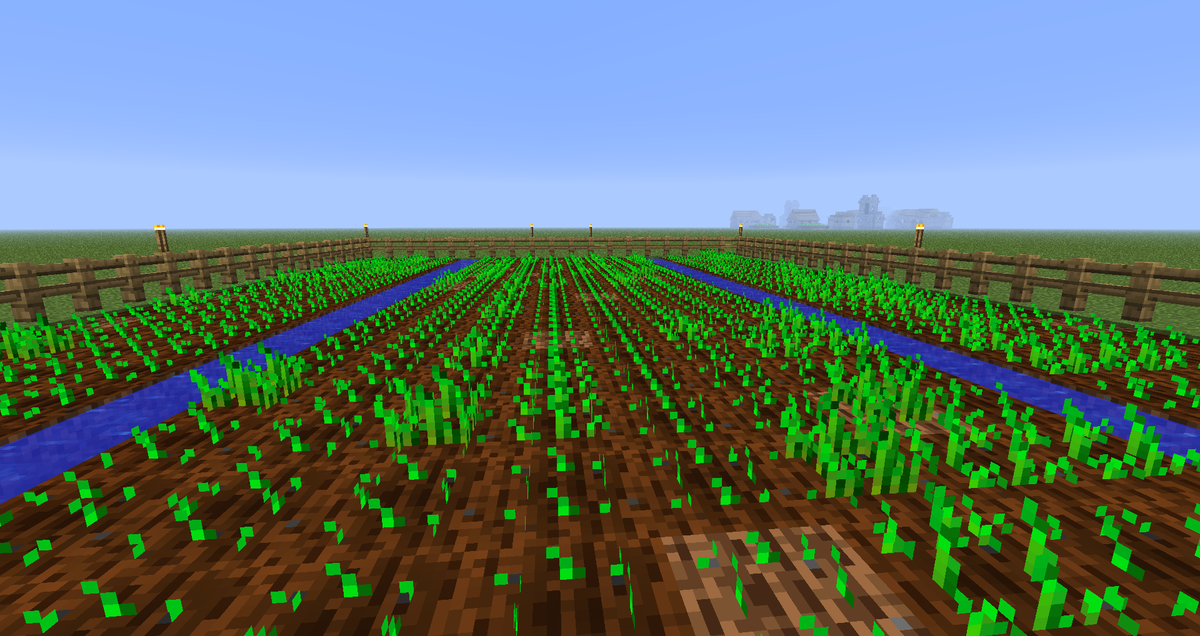Accessing the project
The project was built by Daniel Davies and Brett Galkowski as part of UCIs CS175 "Project in Aritifical Intelligence" course
Check the project out on
Github
Welcome to RoboFarm!
Saving you time by intelligently automating minecraft farming to give you an optimum crop growth
The project was built by Daniel Davies and Brett Galkowski as part of UCIs CS175 "Project in Aritifical Intelligence" course
Check the project out on
Github
Crop farming in Minecraft can be quite a time consuming process: to get any significant benefit in the game, we may have to first find suitable spots for the seeds to grow, and then physically go to each of those optimal locations to plant them. So to make the process quicker and easier we have made a tool that allows an AI to do the farming process for you and save more time for you to do whatever else you want to do in the game.
The final aim of this project is to have an agent that, given a map, and some farmable objects defined by the user, will plant the objects for the user in an optimal position.
Technically there are many variables that influence the growth of a crop in minecraft (see here for details). This includes:
Given these criteria, our agent should find optimal planting coordinates using GENETIC ALGORITHMS

In brief, a genetic algorithm is essentially a search algorithm based on natural selection. In general, the best "genes" (aka the best of your states from a set of states in your world) will survive and reporduce to make a better population in each round than you had before.
The stages of a genetic algorithm are roughly as follows: (see here)
Below is a list of resources we found useful when researching Genetic Algorithms
This resource demonstrates how a genetic algorithm is used to find minimum points on a graph
A nice breakdown is given of the seperate stages of the genetic algorithm and how you can actually code up a solution by yourself
Visit here to see the article
The below video shows a nice visual animation on how genetic algorithms repeatedly take the best performing samples from the "gene pool" to eventually converge on a population that each finds itself on some optimal point.
See the video on youtube here